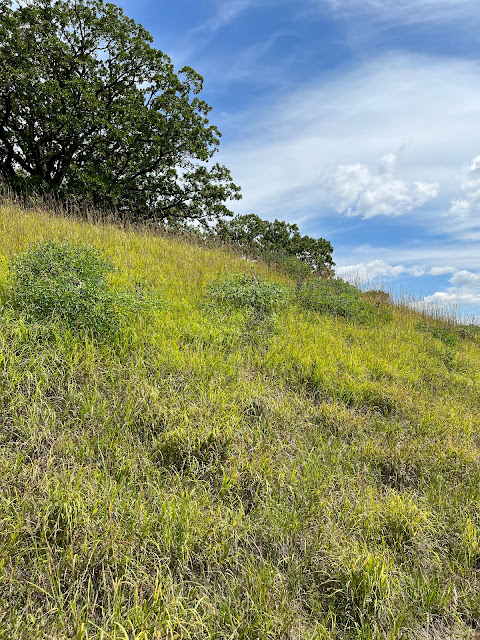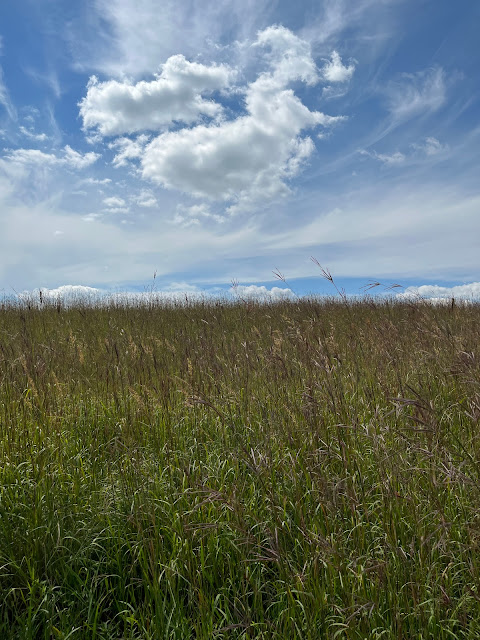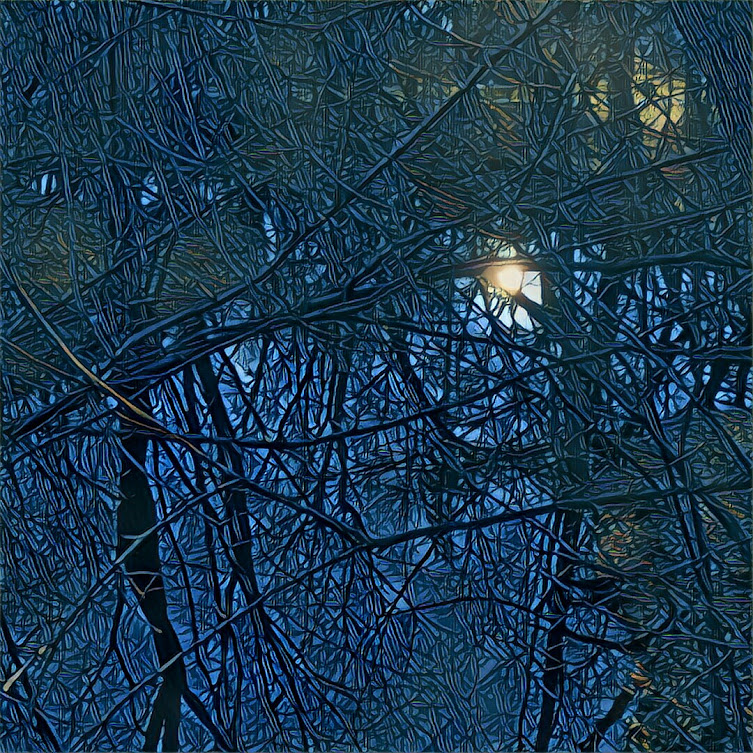I walk in wide, prairie stillness.
Summer's end. Crisping under the August sun, whiff of juniper, a pelting of grasshoppers before me, the tidal buzz of cicadas cresting and dying away.
It was a still day, I was sweating, and the sun pounded down.
The land whispered its song.
You know how what you see around you sometimes floods past your skin and your resistance, and you feel larger? Connected. What's out there changes what's in here.
Other times it feels like you can't get past yourself enough to fully be in another place.
This was one of those times. The inner disquiet was loud.
Which is exactly when you most need that connection.
 |
| Wild grapes ripening |
 |
| Indian grass flowering |
 |
| Bur oaks and clouds |
Even when you are sweating and hot and feel cranky, you still speak to the cedars, the butterflies, the oaks, particular cloud formations. You try to encourage everyone. You try to learn things, and be a good guest.
Standing beneath a bur oak tree, I listened to its ripe acorns pelt the ground around me.
A lovely, clear song I'd never heard before demanded my attention, descending from the hills across the road. A field sparrow, said the Merlin app, only this far north during breeding season. (Now that fledglings have left the nest, tens of millions of birds are migrating south across Minnesota each evening.)
 |
| Goldenrod and pasture thistles |
 |
| Big bluestem, turning copper-carmine-purple |
The point is, the prairie still bloomed. Even in late August. Even in drought. Big bluestem, Indian grass, Rattlesnake master, goldenrod and thistle. Grapevines and gray dogwood branches heavy with fruit, ripening in the sun.
Prairie plants have taught themselves over millennia how to adapt to adverse conditions, like drought. For instance, they understood it was necessary to grow deep roots, narrow leaves and hairy stems to reduce the evaporation of precious water.
Even in hard times, the wise plants know how to make medicine, to feed others, to be generous with their gifts. They keep on expressing who they are, however and wherever they can. They devote all their powers to making and remaking this world each day.
 |
| Rattlesnake master, goldenrod, bluestem and Indian grass |
 |
| Staghorn sumac turning red |
 |
| Young oak savanna restoration |
But how about much-less-wise people? When we are crispy-leaved, crooked-stemmed, discouraged, maybe the best we can do is to just show up. To be an imperfect witness to that beauty which remains, to what is still right with the world. Maybe that is how some withered humans express who we are in a time of drought.
Maybe — though we seem to walk in solitude on these journeys, alone with our deadened sense of wonder and fractured praise songs and an unease we cannot escape however far we walk — the world is still listening to us, still teaching us, still inviting us in. Still casting blessings upon us each day.
So may it be.



